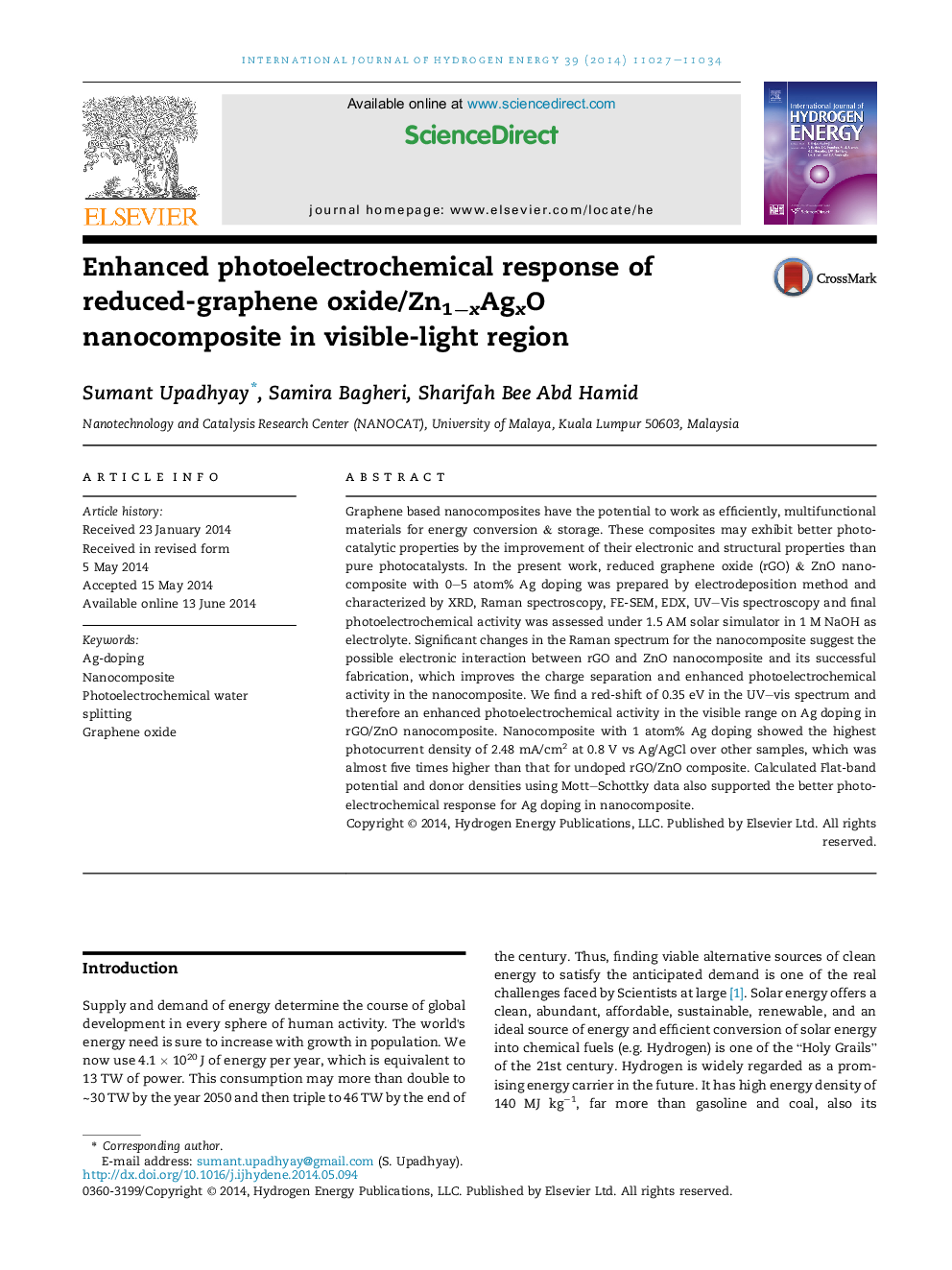| Article ID | Journal | Published Year | Pages | File Type |
|---|---|---|---|---|
| 1272245 | International Journal of Hydrogen Energy | 2014 | 8 Pages |
•Graphene based nanocomposite was successfully fabricated by electrodeposition.•Nanocomposite exhibited good photocatalytic activity in visible region with Ag-doping.•Significant changes in Raman suggest possible electronic interaction in nanocomposite.•Nanocomposite with 1 atom% Ag doping exhibited best photocurrent of 2.48 mA/cm2.
Graphene based nanocomposites have the potential to work as efficiently, multifunctional materials for energy conversion & storage. These composites may exhibit better photocatalytic properties by the improvement of their electronic and structural properties than pure photocatalysts. In the present work, reduced graphene oxide (rGO) & ZnO nanocomposite with 0–5 atom% Ag doping was prepared by electrodeposition method and characterized by XRD, Raman spectroscopy, FE-SEM, EDX, UV–Vis spectroscopy and final photoelectrochemical activity was assessed under 1.5 AM solar simulator in 1 M NaOH as electrolyte. Significant changes in the Raman spectrum for the nanocomposite suggest the possible electronic interaction between rGO and ZnO nanocomposite and its successful fabrication, which improves the charge separation and enhanced photoelectrochemical activity in the nanocomposite. We find a red-shift of 0.35 eV in the UV–vis spectrum and therefore an enhanced photoelectrochemical activity in the visible range on Ag doping in rGO/ZnO nanocomposite. Nanocomposite with 1 atom% Ag doping showed the highest photocurrent density of 2.48 mA/cm2 at 0.8 V vs Ag/AgCl over other samples, which was almost five times higher than that for undoped rGO/ZnO composite. Calculated Flat-band potential and donor densities using Mott–Schottky data also supported the better photoelectrochemical response for Ag doping in nanocomposite.
